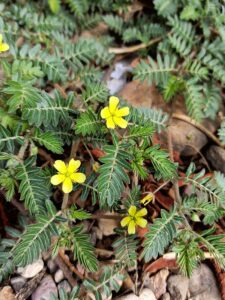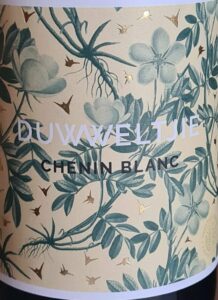Melvyn Minnaar: Afrikaans as part of local wine’s USP
By Christian Eedes, 3 March 2025
Without falling into the rabbit hole of its politics, it is a fact that Afrikaans became an official language, one of two, in the then Union of South Africa in 1925. In fact, it was so proclaimed – set on an equal perch to colonial English – on that merry day of May, Friday 8th. (Rabbit hole apart, it needs to be said that it took too long, and sadly so, for any of the languages already at hand since 300 years before, to make it to that official position.)
One may or may not want to fall into whatever celebrations this centenary signals, but I, for one, cannot but lap up the poetic joy of Afrikaans in the vineyards, on farms, in cellars and on the shelves. And it’s not too shabby doing its bit in the global market.
While international branding always tends to drift towards the neutrality of wider-spoken English to communicate, and a new generation of hipster and other winemakers embrace the sometimes-slippery synaesthesia of goofy names on the wine bottles, or fall back on the easy, it is obvious that Afrikaans can hold the wine headlines. It can certainly ring a resounding bell about great wine.
Even if overseas wine buyers can’t pronounce, never mind know the meaning, of, say, Kanonkop, Meerlust, Mooiplaas, Uitkyk, Kleinood, Vergenoegd, Alleverloren, Eenzaamheid, Perdeberg, what was the Sadie family’s much-sought-after Ouwingerdreeks, and so on, they pretty much know all about and appreciate the good in the bottle.
If the baggage of history was an impediment at the time of liberation three decades ago, those Afrikaans names did and still offer USPs. (A label with an unusual word or spelling can indeed be intriguing as unique selling proposition.)
What Afrikaans on the label indicates is, at least, a history (however convoluted, bad and/or complicated) and that signals a story, usually an extensive tale. But it also can mean poetry and a colourful ring of words. Each of the examples I mention, closely-read, opens up resounding echoes of human experience. These are bottled narratives, well worth engaging in the company of the wine’s enjoyment.
In fact, being of the (old existentialist) school who believes one needs to consider and contemplate as much information in the greater scheme of evaluation and assessment (as opposed to ‘blind-tasting’ these names are added-value to the wine experience.
In a fun game, one will sip the Black Label Pinotage and let your mind meander on the hill (‘kop’) where those rarefied grapes grow on Kanonkop; where the ‘lonely’ cinsaut in all its deliciousness find a happy home on Eenzaamheid; why Perdeberg is named after a horse (or is it a zebra?) and produces steen (chenin blanc) that benchmark the variety in the Cape.


Talking of chenin, there is, of course, Duwweltjie – Etienne Terblanche and Stephanie Wiid’s superb, prizewinning wine from their fabulous Thistle & Weed project. It, too, happens to have a celebration: they started out ten years ago. Named after the pernicious little thorn, Tribulus terrestris, that pinches your toes in the grass (‘duwweltjie’ from probably ‘duiweltjie’ – little devil), this Paarl chenin wears that Afrikaans nomenclature with delightful ironic grace. So too does Brandnetel (Urtica dioica), their chenin from Stellenbosch, and Springdoring from the Swartland.
Their other Afrikaans-named wines each invites the drinker, once hooked on the joy inside the bottle, to look up the meaning of the word and indulge in their mischievousness resonance. Now that’s what I call clever and successful USP marketing.
Legendary in that respect is, of course, the original local bubbly, the blueprint of all to follow: Simonsig’s Kaapse Vonkel. When Frans Malan coined this name in 1971 for his first bottle-fermented wine, he not only fell under the spell of the mellifluous ‘vonkel’ – a word that can only superficially be translated as ‘sparkle’ and/or ‘sparkling’ – but he added ‘Kaapse’, making it clear that this is no copycat patsy, but irrefutably local. (‘Kaaps’ is a variant of the language).
I can think of no other bubbly to crack on the centenary, the charm and allure of Afrikaans and wine. And I still mourn the phasing out of ‘steen’.
- Melvyn Minnaar has written about art and wine for various local and international publications over the years. The creativity that underpins these subjects is an enduring personal passion. He has served on a few “cultural committees”.








Comments
0 comment(s)
Please read our Comments Policy here.